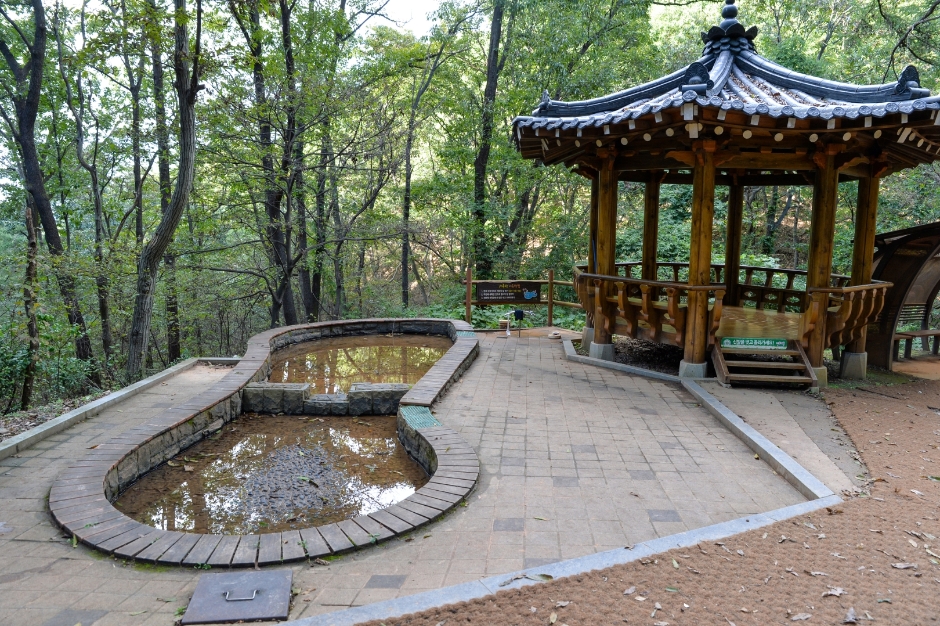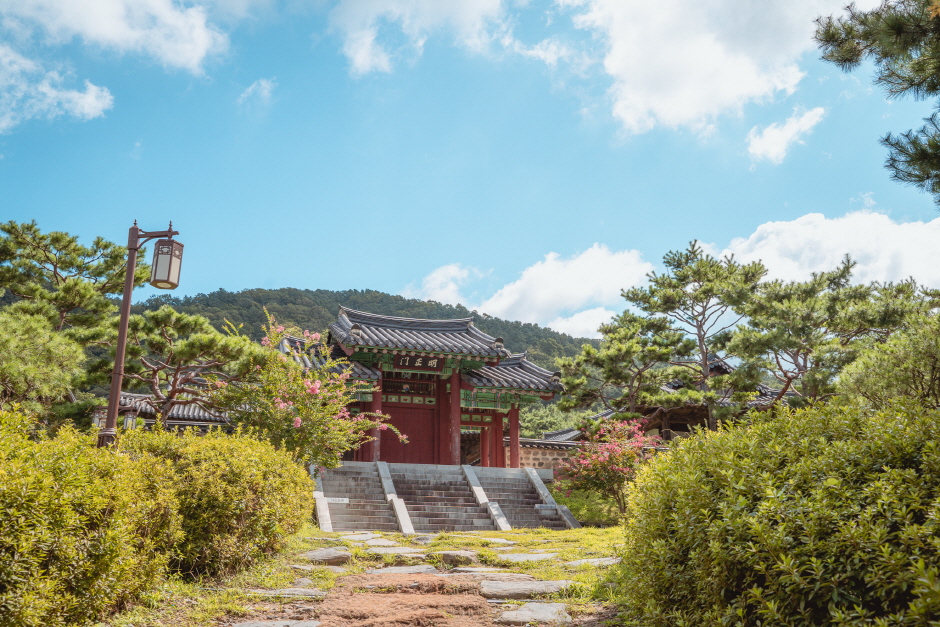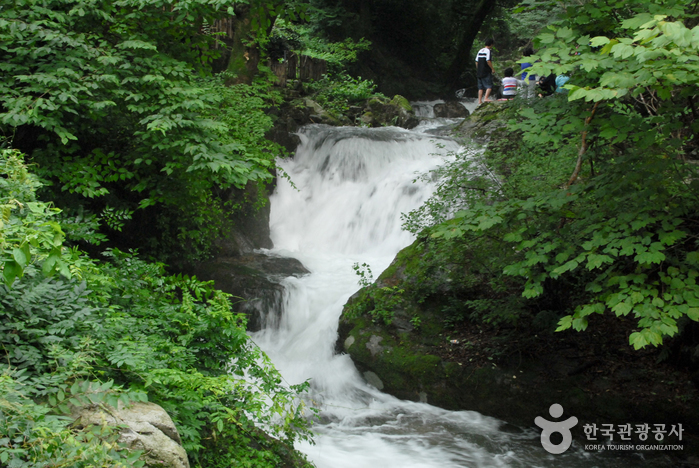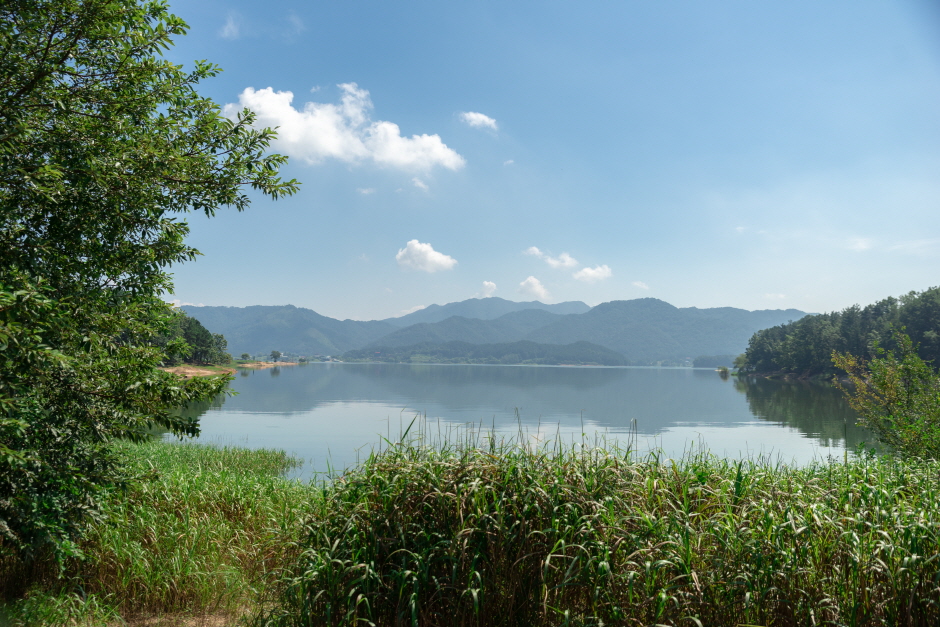Daejeon O-World (대전오월드)
9.4Km 2022-12-27
70, Sajeonggongwon-ro, Jung-gu, Daejeon
+82-42-580-4820
Daejeon O-World was established when the Daejeon Zoo and Joy Land, an amusement park, were integrated under the supervision of the Daejeon City Corporation. The project cost a whopping 40 billion won and resulted in the construction of Flower Land (100,000㎡) in addition to the renamed Zoo Land and the preexisting Joy Land. It opened on May 1, 2009 to the public.
The three main sections of Daejeon O-World are Zoo Land, Joy Land, and Flower Land. Zoo Land is currently home to a total of 600 animals of 130 different species including American black bears, Bengal tigers, lions, elephants, giraffes, zebras, and ostriches. Amusement rides, waterslides, and four-season sledding are housed at Joy Land. Flower Land boasts a number of smaller sections such as Rose Garden, Four Season Garden, Herb Garden, and Maze Garden and is home to a total of 150,000 tress of 100 different species and 200,000 flowers of 85 different species. An outdoor stage and concert hall are also located in the area.
There are plenty of things to see and enjoy in every corner of Daejeon O-World. Just beyond Festival Street, visitors will find a large (3,000㎡) pond with a fountain.
Jangdong Forest Park (장동산림욕장)
9.5Km 2024-02-15
79-70 Sandi-ro, Daedeok-gu, Daejeon
Jangdong Forest Park, a designated forest bathing area, is situated on Gyejoksan Mountain in Daejeon. This tranquil site is equipped with sports facilities, a swimming pool, and a lawn area. A unique attraction starting from the park is the Gyejoksan Red Clay Trail, where visitors can walk barefoot and enjoy the natural health benefits. Additionally, the park serves as a starting point for various hiking trails leading to the historical Gyejoksanseong Fortress, providing a range of trekking experiences for outdoor enthusiasts.
Daedong Sky Park (대동하늘공원)
9.6Km 2022-12-26
182, Dongdaejeon-ro 110beon-gil, Dong-gu, Daejeon
+82-42-251-6672
Daedong Sky Park was formed as part of the Rainbow Project on December 2009. A giant windmill, which represents the park, is located 127 meters above sea level. Visitors can see an amazing panoramic view of the city as well as relax at one of the many benches and pagodas. A mural village connected to the Sky Park offers themed coffee shops and has become a popular attraction.
Uam Historical Park (우암사적공원)
9.8Km 2024-02-29
53 Chungjeong-ro, Dong-gu, Daejeon
+82-42-673-9286
Uam Historical Park, situated in the eastern part of Daejeon, is both a cultural heritage site and a park. It was once the place where Uam Song Siyeol (1607-1689), a scholar and government official during the Joseon dynasty, conducted his research and educational activities. The traditional houses established during his time and the relics left by Song Siyeol are still preserved, and visitors can view these artifacts at the historic museum. The park also features a pond within its premises.
Gyejoksan Red Clay Trail (계족산 황톳길)
9.9Km 2022-12-26
San 85, Jang-dong, Daedeok-gu, Daejeon
+82-42-623-9909
Gyejoksan Red Clay Trail opened in 2006 as the nation's first eco-healing barefoot walking trail. Walking along this 14.5-kilometer-long trail filled with the fresh aroma of pine needles is a great way to get healthy. The Gyejoksan Mountain Barefoot Festa takes place every year in May and additional weekend programs are available from April to October. Visitors can also enjoy a view of downtown Daejeon from Gyejoksanseong Fortress, which was built during the time of the Three Kingdoms.
Sabiseong (Donghak Sanjang Hotel Korean restaurant) (사비성 (동학산장호텔 한식당))
9.9Km 2024-02-21
266-4 Donghaksa 1-ro, Banpo-myeon, Gongju-si, Chungcheongnam-do
042-825-4301
Sabiseong is a Korean restaurant operated by Donghak Sanjang Hotel, located on the eastern slope of Gyeryongsan Mountain. It offers a variety of traditional Korean dishes such as sagor ugeojiguk (kimchi cabbage soup), hwangtae kongnamulguk (dried pollack and bean sprout soup), yukgaejang (spicy beef soup), sanchae bibimbap (wild vegetable bibimbap), and grilled dishes like samgyeopsal (pork belly) and ori hunje (smoked duck). Nearby attractions include Gyeryongsan National Park, Donghaksa Temple, and the Korean Natural History Museum.
Geumnam Egret Habitat (금남 백로 서식지)
10.4Km 2025-05-20
45-13, Gamseong-gil, Geumnam-myeon, Sejong-si
+82-44-300-5833
The Egret Habitat in Gamgseong-ri covers a small mountain located in Yuseong-gu District. Existing since the Joseon dynasty era, the habitat is home to common herons and cattle egrets. Up to 5,000 birds have been observed at one time. The best time to visit the habitat and see the egrets is between April and May.
Gyeryongsan National Park (계룡산국립공원)
10.5Km 2021-09-06
327-6, Donghaksa 1-ro, Gongju-si, Chungcheongnam-do
+82-42-825-3002
Gyeryongsan National Park stretches across the cities of Daejeon, Gongju, and Nonsan in Chungcheongnam-do and was made a national park on December 31, 1968. The name of the mountain comes from the fact that the ridgeline looks like a dragon wearing a chicken's crest on its head. The topographical features are what make this mountain stand out and its mysterious folklore is what makes it so interesting. The park features many peaks, including the main peak Cheonhwangbong (alt. 845.1 m), as well as Sambulbong, Yeoncheonbong, and Gwaneumbong Peaks. This mountain is famous for its many interesting sites, with its fantastic rock structures and Yongmunpokpo Falls on the west, Eunseonpokpo Falls to the east, and Amyongchu and Sutyongchupokpo Falls in the south.
In spring, cherry blossoms bloom along the path to Donghaksa Temple, and during summer the lush green of the valley is very beautiful. During fall, the maple trees reveal their crimson colored leaves around Gapsa Temple and Yongmunpokpo Falls. The snowcapped peak of Sambulbong in winter is simply breathtaking. Gyeryongsan is full of rare animals and plants, beautiful waterfalls and a rich history with mysterious legends and cultural treasures. To the east is Donghaksa Temple; northwest, Gapsa Temple; southwest, Sinwonsa Temple; and southeast, Yonghwasa Temple.
Daecheongho Obaengni (500-ri) Road (대청호오백리길)
10.9Km 2021-06-04
34, Cheongaedong-ro, Dong-gu, Daejeon
+82-42-273-5550
Daecheongho Obaengni (500-ri) Road is a 220 kilometer walking path passing through the Daejeon (Dong-gu, Daedeok-gu) and Chungcheongbuk-do (Cheongwon, Okcheon, Boeun) areas. The road passes Daecheongho Lake, small streams, trekking roads, a forest trail, an old path, and much more. The "obaengni" (500-ri) from the name of the road comes from the distance from Seoul or Busan to Daecheongho Lake, which is 500-ri.
Several mountains at an altitude of 200-300 meters and lots of greenery surround Daecheongho Lake. The area also has a date course, a meditation course, a trekking course, a family trip course to experience rural culture and cultural exploration, a bike course and other themed courses. The road was awarded an Asian Townscape Award by the UN-Habitat Program.
Near the road are tourism attractions like the Daecheong Dam Water Culture Center, Daecheongho Sculpture Park, Daecheongho Art Museum, Daecheongho Natural Ecology Center and others. In addition, there are historic cultural tourism spots like Cheongwon Cheongnamdae, Munui Cultural Properities Site, Boeun Songnisan Mountain, Okcheon Dujunbong Peak, and the birthplace of Jeong Jiyong and Yuk Yeongsu.
Sintan Myounog (신탄면옥)
11.0Km 2024-02-15
74 Deogambuk-ro 104beon-gil, Daedeok-gu, Daejeon
Sintan Myounog, situated near KTX Sintanjin Station, is a Korean restaurant celebrated for its Pyeongyang naengmyeon (Pyeongyang cold buckwheat noodles). This dish stands out for its unique beef broth, which is blended with dongchimi (radish water kimchi) to yield a savory umami flavor. In addition to naengmyeon, the restaurant also serves other popular Korean dishes, including dwaeji galbi (grilled pork galbi) and galbitang (galbi soup). The combination of sweet galbi with the tangy naengmyeon provides a diverse and satisfying culinary experience.





 English
English
 한국어
한국어 日本語
日本語 中文(简体)
中文(简体) Deutsch
Deutsch Français
Français Español
Español Русский
Русский